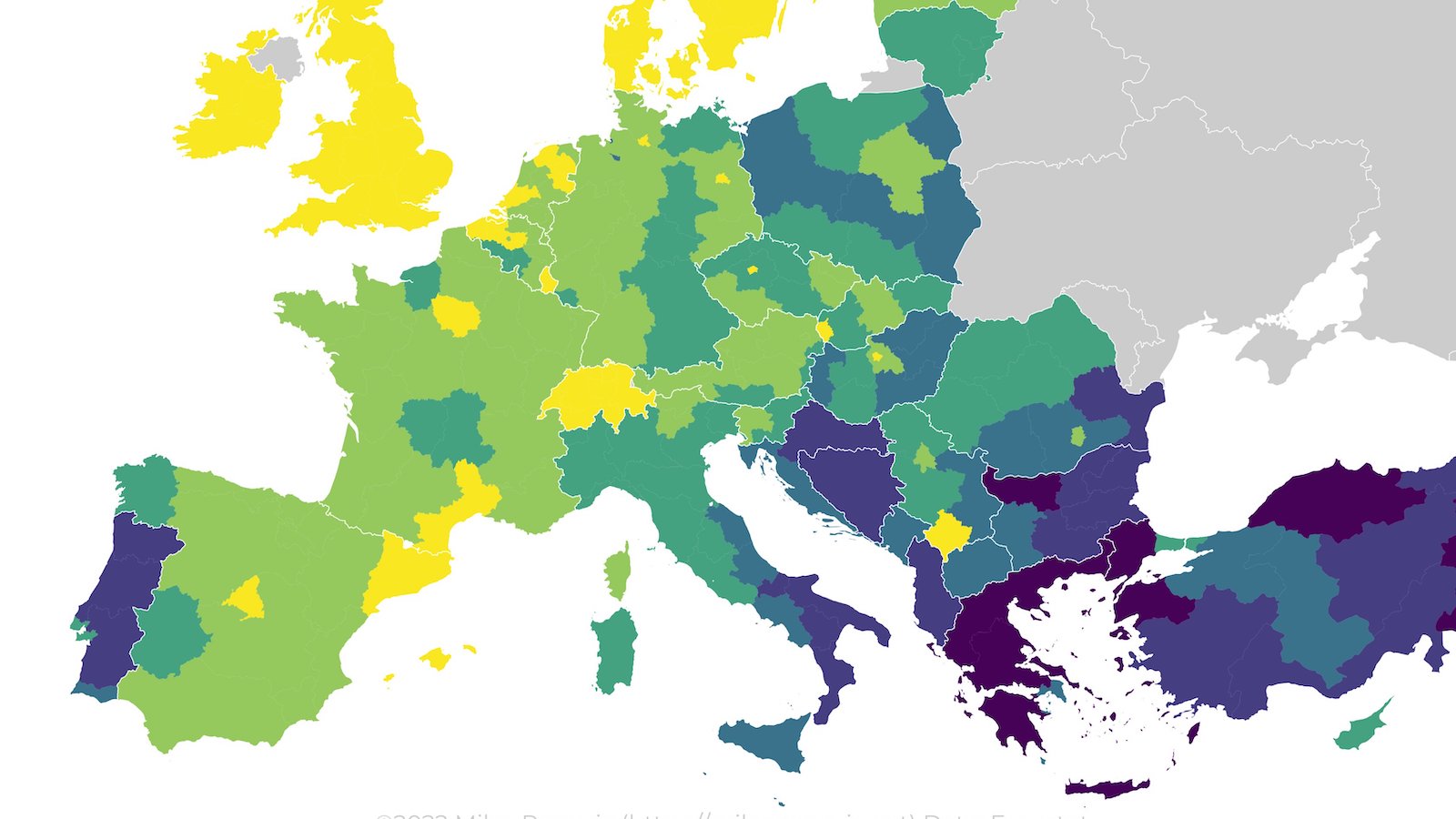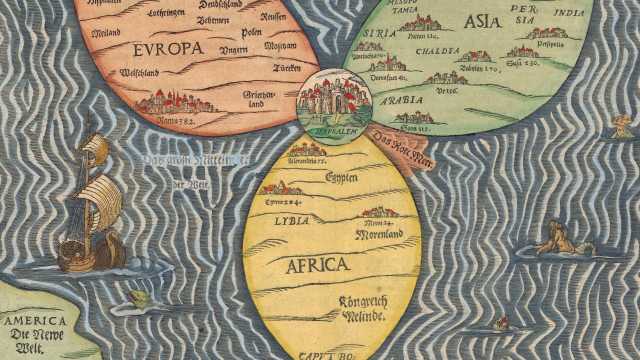91 – Early 20th Century Balkan Aspirations
n
n
n
n
n
At the beginning of the twentieth century, the Ottoman Empire was called the ‘Sick Man of Europe’ because it didn’t seem able to hold on to its possessions in the Balkans. However, as the Balkan nations managed to cast of the Ottoman yoke, their own overlapping territorial claims led to conflicts that have dominated the region up until the 1990s.
n
In 1912-13, in the first of two Balkan Wars, the Balkan League (Bulgaria, Montenegro, Greece and Serbia) conquered Macedonia, Albania and most of Thrace, only to turn on each other in the second Balkan War over the division of the territory gained. The main reason for this was the fragmented distribution of the different ethnicities in the Balkans, and after centuries of Ottoman dominance, the absence of well-established borders between them.
n
As shown in this map, dated 1912:
n
Servia (later uniformly called ‘Serbia’ in English) was a small, recently independent statelet smaller even than present-day Serbia. Yet it felt compelled to champion the rights of all southern Slavic peoples and extend its reach all the way up to Trieste, at that time part of Austro-Hungary.
n
Similarly, fairly newly independent Bulgaria aspired to create a ‘Greater Bulgaria’, encompassing all of ancient Macedonia, up to the Greek port city of Salonika. In the nineteen-nineties, disagreements of what constitutes Macedonia (territorially and ethnically) led to disputes between Greece (which sees itself as the heir of a purely Greek Macedonia) and the former Yugoslav republic of Macedonia (called FYROM by its acronym, because of Greece’s objections to use of the name by these Slavic ‘interlopers’).
n
Romania (then still called ‘Rumania’) wanted to extend its reach to include Bessarabia (presently Moldavia, then part of Russia) and
nTransylvania, then part of Austro-Hungary. Both territories are home to large populations of ethnic Romanians.
n
Greece, at that time consisting only of the peninsula of the Pelopponesos, Athens and surroundings and a small part of the mainland to the north, sought to extend its domain to include Crete, Cyprus, most of the Aegean islands, the southern half of Albania and Macedonia, all the way up to and including Constantinople (present-day Istanbul).
n
It’s interesting to note that none of these four countries managed to reach the maximum extent of its territorial ‘aspirations’, as shown in this map.
n
Greece comes close, although its northern border doesn’t quite extend as far north as aspired to in this map – it includes the southern part of Albania, which today is still home to a Greek minority. Also, Turkey managed to hold onto a sliver of Europe beyond Istanbul (Constantinople) that in this map is divided between Greece and Bulgaria. Finally, in 1974 a Greek-sponsored coup on Cyprus, intended to bring the island under the control of the Greek government, led to a Turkish invasion, the split of the island in an unrecognised Turkish and an independent Greek part.In the 1990s, Serbia’s ‘Greater Serbian’ ambitions led to the bloodiest European conflict since the Second World War. Although a Serbian republic was established in Bosnia and Herzegovina, Serbia proper lost all other formerly Yugoslav territories. Even Montenegro, ethnically closest to Serbia, declared its independence from what remained of the Yugoslav federation last year. And though Kosovo nominally still is a Serbian province, in practice it is an independent entity under the tutelage of the United Nations.
nBulgaria’s designs on Macedonia and on access to the Aegean Sea were never realized, and Romania, while managing to incorporate Transylvania after the collapse of the Austro-Hungarian Empire, never succeeded in annexing Bessarabia (or Moldova, as it is now known) after it became independent at the end of the twentieth century…nn






